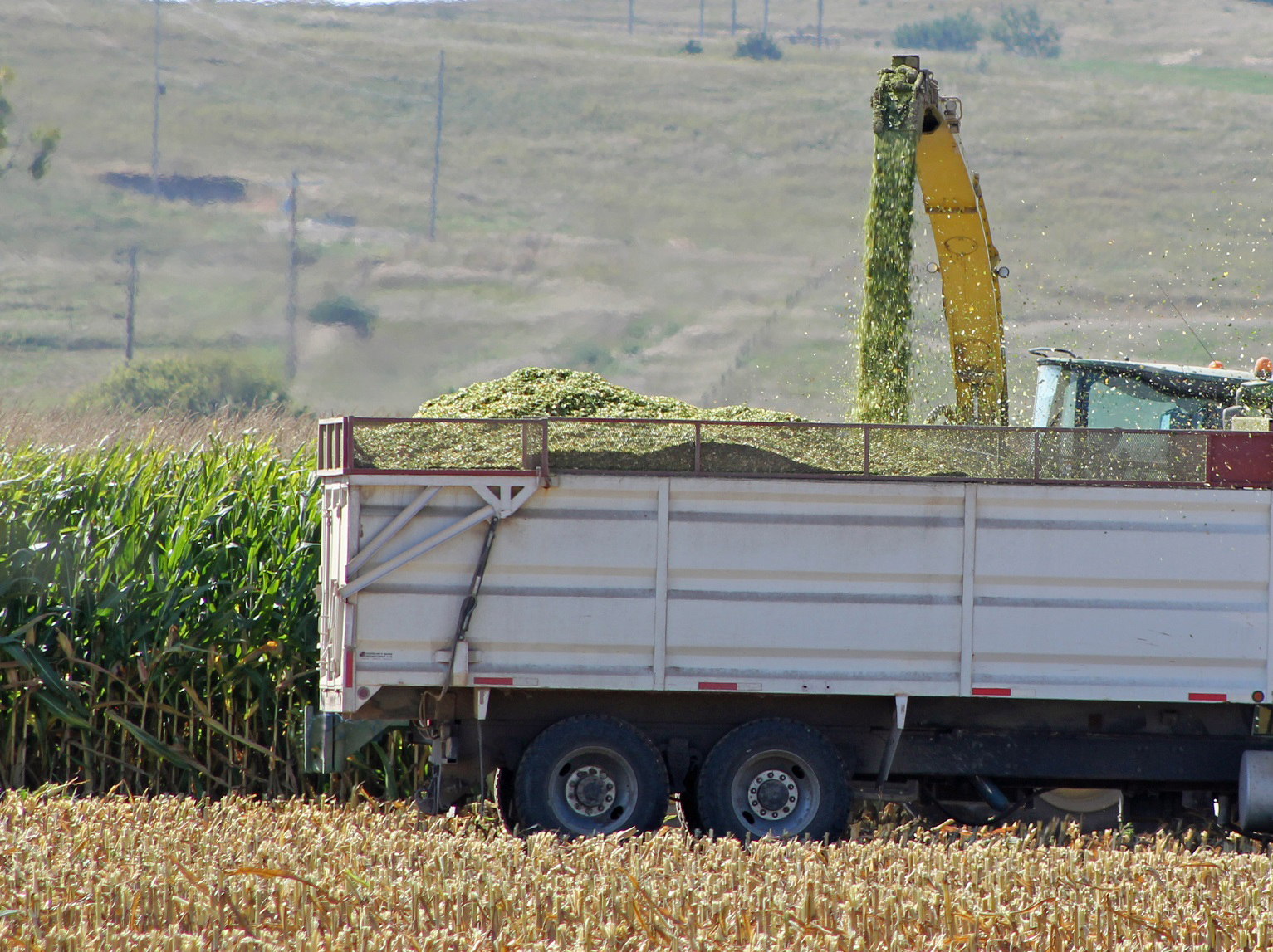Is Silage an Option for Corn Impacted by the Canal Breach?

Listen to a discussion of the content in this article on this episode of the BeefWatch podcast. You can subscribe to new episodes in iTunes or paste http://feeds.feedburner.com/unlbeefwatch into your podcast app.
On July 17 when the Gering-Ft. Laramie canal breached, it left over 100,000 acres of irrigated crops in eastern Wyoming and western Nebraska without water. Without irrigation water and adequate rainfall, taking the corn to full maturity and grain production, may not be the best option for the crop.
Producers with a corn crop impacted by the canal breach may want to consider making corn silage out of this year’s crop. There are several things to consider when making the decision to make silage.
The first decision is whether to harvest grain or chop the crop for silage. In NebGuide G1865 The Use and Pricing of Drought Stressed Corn, producers can find a formula for estimating grain yield using 1/1000 of an acre, the number of rows in the average ear, and the number of kernels in a row of an average ear. Producers must then determine if given the cost of producing the crop, and the price of corn if it makes economic sense to harvest the crop for grain.
The next thing a producer will want to do is to check the labels on any chemicals that have been applied to see if there are any restrictions on harvesting the crop for livestock.
Additionally, producers need to talk to crop adjustors, insurance agents, and Farm Service Agency employees to determine how harvesting the crop for silage instead of grain will impact pay out on crop insurance or government programs.
Next, producers need to estimate the tons of silage that might be produced from the drought stricken crop. Again as with grain yield estimates, producers can take the pounds in 1/1000 of an acre and multiply that by (1000/2000). An example for a field with 30 inch rows would be to weigh the chopped forage in a 17 ft. 5in. row. Assuming that was 34 pounds, then 34(1000/2000) would be 17 ton/acre estimated forage. Silage is best packed at 35% dry matter (65% moisture) and therefore, timing of silage harvesting and packing is critical.
There are several methods for pricing silage. University of Nebraska Extension Educator Aaron Berger has an article from August of 2017 on estimating the value of silage standing in the field, packed in the silo, or at the bunk when fed. A simple method for estimating the value of the standing crop is the price of corn x 7.65. So if corn is $4.00/bushel then the silage would be worth ($4.00 x 7.65) or $30.60/ton at 65% moisture. However, the energy value of drought stressed corn is often 85-95% that of traditional corn silage and must be taken into account to be fair to the party buying the silage.
Nitrates can be an issue when corn is stressed by drought. However, nitrates tend to accumulate in the lower one-third of the stalk and ensiling dissipates nitrates by 40-60%, so when sending samples to a commercial laboratory to determine nutrient quality of the ensiled forage, also ask for a nitrate analysis.
If chopping, packing, storing, and feeding silage is not a routine activity in a given operation but will be utilized this year, the University of Nebraska has many good resources on preserving and feeding silage. Links to a few of these videos and articles are listed below:
2018 Silage for Beef Cattle Conference
Drought Corn Silage in Beef Cow Diets
Options for Drought Damaged Corn Fields
SHOULD YOU BE CONSIDERING SILAGE BAGS? Bagged Silage vs. Silage Bunkers & Piles
Harvesting silage from drought stressed corn may be an option to make the best of a challenging situation. Thoroughly evaluating all the implications of chopping corn for silage is important. Drought stressed corn can still make excellent feed. Proper harvest, packing and storing methods will be key to reducing shrink and having good quality silage to feed.
Interviews with the authors of BeefWatch newsletter articles become available throughout the month of publication and are accessible at https://go.unl.edu/podcast.
